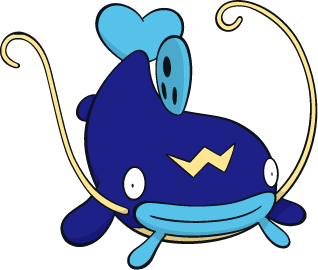Soldiers from Zelda: A Link to the Past

Playstyle: Soldier utilizes all types of Soldier abilities and throws them into one character. He's like that balanced character. He has various projectiles, but also has physical attacks. Lets look at some stats.
Weight:
Soldier is one of the heaviest characters, having all that armor. His weight is around 7/10.
Size:
Soldier is a bit taller than Ivysaur, and is about as wide as Olimar. I would say 6/10
Jumping:
Soldier actually has decent jumps. They're about as high as 3 Jigglypuff jumps. 5/10
Falling Speed:
Soldier falls pretty fast, just a little slower than Fox McCloud. 8/10
Ground Speed:
Judging how fast Soldiers are in ALttP, they're pretty quick. 7/10
Air Speed:
Not the best. With all that weight, they don't have good Air Speed. 3/10
Traction:
Soldier has terrible Traction, because of again, all the weight. 4/10
----------------------------------------
Moveset!!
Jab Combo: Soldier does a horizontal swipe using his sword to the left. This part of the combo does 5%, and can KO Bowser at around 250%. Next is a vertical swipe downwards, doing 7% and KOing Bowser at 230%. The combo can be used to create spacing and start combos.
Dash Attack: Soldier uses Link's Jump Attack. This is one of Soldier's main killing moves, and one of the longest ranged, going 2 Battlefield platforms. This also has major ending lag. This does 10% and KO's Bowser at 150% at the least.
F-Tilt: Soldier uses the Spear and throws it at a high arc. The spear goes about half of Final Destination and can create more space between you and your opponent. This move does 9% and KO's Bowser at 160%
U-Tilt: Soldier shoots an arrow from his Bow and Arrow. It goes about as high as 5 Togepi's and does 7%. This can be used for ending combos, and has a little startup lag. KOing Bowser at 150%
D-Tilt: Soldier stabs his Spear into the ground. This will go through thin platforms, doing 10% nevertheless. This can spike if used next to a ledge, and is one of Soldiers only Meteor Smashes. KOing Bowser at 130%
F-Smash: Soldier will load his Bow with 3 Arrows. When launched, the arrows will go straight forward, neck and neck, not effected by gravity. They go about 3/4 of Final Destination. Each arrow does 13% mid charge, and 19% full. KOing Bowser at 200%
U-Smash: Soldier will get out his Ball and Chain. He circles it like a lasso and launches it upwards when the player decides. 15% mid, 20% full. This move also has a bit of ending lag. KOing Bowser at 170%
D-Smash: Soldier jumps and pounds the ground. Using all his weight, this is another of Soldier's killing moves, KOing Bowser at 120%. This move does 16% mid charge, 19% full.
N-Aerial: Soldier swipes in front of him, then swipes behind him quickly. This has the 2nd most ending lag of Soldier's moves, and does 6% per swipe, KOing Bowser at 190%.
F-Aerial: Soldier curls into a ball, being a Multi-Hit move. This move does 13% at the most, and KO's Bowser at 180%
B-Aerial: Soldier shoots an arrow behind himself. This move is different in that it makes you face the direction you're shooting at afterwards. Does 12% and KO's Bowser at 180%
D-Aerial: Soldier shoots an arrow bellow himself, causing 15%. This move goes until it hits something and KO's Bowser at 140%
U-Aerial: Soldier swings his sword above himself. It's nothing special, but it does do 16%. KO's Bowser around 150%
Grab: Soldier uses the Ball and Chain to grab opponents and bring them to him.
Pummel: Soldier does a simple stab. Does 3%
F-Throw: Soldier lets go and kicks opponent. This does 11% and KO's Bowser around 210%
B-Throw: Soldier throws the opponent behind him and hits them with a bomb in mid-air. This is a strong move doing 16% and KOing Bowser at 150%
D-Throw: Soldier throws them down and strikes them w/ a bomb. It's does 14% and KO's Bowser at 145%
U-Throw: Soldier throws the opponents and, you guessed it, throws a bomb at them. Does 15% and KO's Bowser at 155%
N-Special: Soldier throws his spear. He throws it in less of an arc and more of a line than F-Tilt. Does 16%, KO's Bowser at 170%, and has a bit of ending lag. It also goes until it hits something.
S-Special: Soldier uses his dashing attack. This goes as fast as Falcon's running speed and does 14%, and KO's Bowser at 160%. You can cancel it by pressing the control pad in the opposite direction. Doing this has some high ending lag, though.

U-Special: A Tether Recovery, Soldier shoots his ball and chain at an incomplete arc. Does 17% and KO's Bowser at 140%
D-Special: Soldier lays a bomb down that explodes in 3 seconds. The bomb can be used for finishing combos and is one of Soldier's killing moves. Does 18% and KO's Bowser at 120%
Soldier moveset complete! Feedback wanted!












